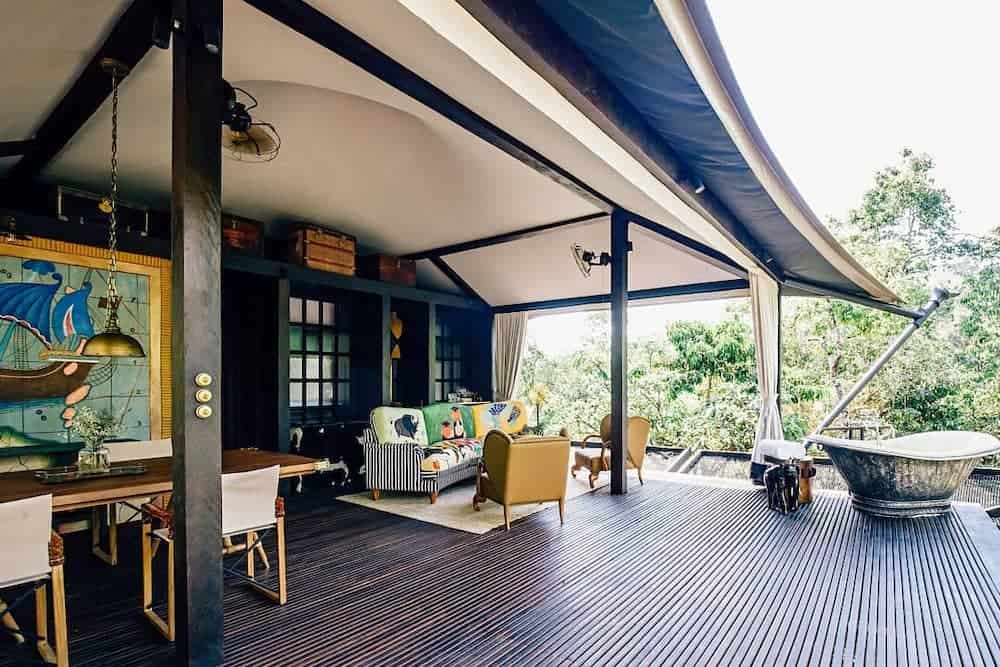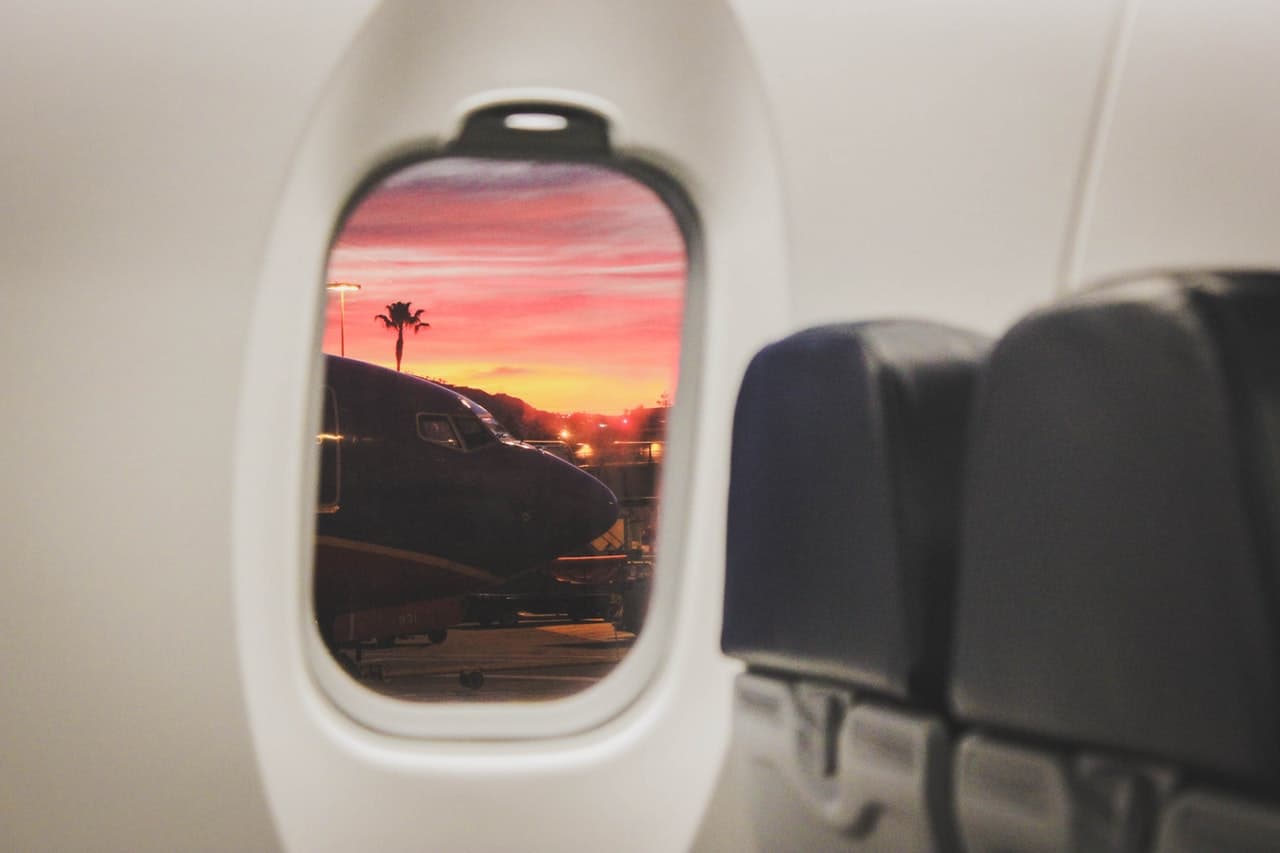We caught up with the brilliant Bill Bensley, eco-architect and luxury hotel designer, to chat environmentally-friendly design and regenerative travel.
If you’ve stayed at an eco-luxe hotel recently, chances are it was designed by renowned architect Bill Bensley. The California-born, Bangkok-based designer is the creative brains behind over 200 hotels in 30+ countries. And when it comes to sustainable design that’s sympathetic to the environment, no one does it better. We caught up with Bill in advance of his appearance at The Regenerative Travel Summit to chat about the importance of sustainability in design, the transition from sustainability to regeneration, and what the future of travel might look like post-pandemic.
As a lifelong environmentalist, how do you celebrate nature and the environment in your design process?
It seeps into everything we do. The first step to any project is looking at the land and learning the lay of the land, the draining patterns, and ensuring we don’t disrupt them. When I am working with a natural environment I know I can only make things worse, because Mother Nature is the ultimate designer. No matter how beautiful my design is, it can never compete with nature, so the key is damage control. I think that if we can build our hotels within a natural environment with a minimal intervention to that environment we have already done what many fail to do, unfortunately. As a landscape architect, before I graduated to hotel design, I learnt the principles of the stewardship of the earth, and those principles apply to every single one of our projects.
When starting out on a new design project, how important is sustainability to you?
Sustainability is paramount to our existence on our planet. I was born in California to English immigrants. My family had a small farm where we were pretty much self-sustaining. I raised bees, quails, chickens, ducks, rabbits, mushrooms, a huge variety of veggies and of course a compost heap. We would travel with our little family trailer almost every weekend to a camp spot close by and in the summers we would travel all over the states. So, you see, I grew up with a great love for the wilderness and certainly learnt how to sustain our family with food. It makes me smile to hear the word sustainability used so frequently these days as though it is a new idea.
Throughout the course of your career, have you noticed the attitudes of hotel stakeholders and investors shifting towards more sustainable practices? Do they want/encourage you to design with sustainability in mind?
There has definitely been a shift. People are starting to understand that sustainability is essential, not an add on. Although it really doesn’t help when Trump says things like “Don’t think science knows…”. Even when clients understand sustainability is important, it takes a lot of follow-through from the operator side to ensure its not just a bunch of greenwashing hogwash. So sustainable practices are just part of the way we work rather than slapping the word sustainable or green onto it, as unfortunately, people tend to think sustainable = expensive. It’s not always the case! Over time we are able to convince them of the importance of what we are doing. For example with my WorldWild project in China, it started off as a “zoo” and has now turned into a 700-hectare wildlife refuge north of Guangzhou. There we’ll be able to educate millions of Chinese on the value of Mother Nature. We’re adopting animals from less than great local zoos. And they’ll run free in 85% of the land, while just 15% will be dedicated to the 7 hotels and 2500 rooms.

When we talk about transitioning from sustainability to regeneration, what do you think that means for hotel design and architecture?
It means REWILDING! This is one of my favourite ideas and it’s what we are striving hard to do at Shinta Mani Wild. The Cardamom forest was severely impacted by logging and poaching. We designed a sustainable camp which powers patrol of the forest by Wildlife Alliance, and over time the forest is getting safer. The animals are returning, the flora is flourishing – it is rewilding after humans did their harm. It is our job to facilitate that process as seamlessly as possible, so nature can grow as it was always meant to – without the menace that is humans. This is a model I hope more and more hotels will follow, building structures that tiptoe ever so softly on the land rather than taking over it.
Do you think people’s attitudes towards travel will change post-pandemic?
Oh absolutely. Pre-COVID, I travelled 30 weeks a year – 60% of my life! I would jump on a plane at the drop of a hat; new play in London, check out a resort in South Africa, present a project in Vietnam with 200kilos of drawings… But now I am grounded and realised: I was flying too much and didn’t need to. Normally I would hop on a plane with drawings and fill up a ballroom to make a presentation. Now I realise, after a few months of Zoom, all the props might have been an unnecessary crutch. In addition, I think this has made us all think about travel more deeply. We will be more selective with where we go. And I hope invest in holidays that are more environmentally friendly and experience-driven. That, I think, will be a plus for our world.
What do you hope the future of travel will look like?
Well, first of all, we can finally get rid of the damn buffet!! But all jokes aside – I hope it teaches us all a lesson. We are looking at a world which has been turned upside down and wants nothing more than to escape into places full of fresh air, greenery and beauty. In the era of COVID, people are seeking space, greenery and have a newfound respect for mother earth. We have been seeing a triumph of nature as it reclaimed our cities – while simultaneously masks, medical waste and single-use plastic have their resurgence as we try and kill this bug. I hope from now on we all think twice as hard, and do five times more than we did before, in terms of sustainability and our travel habits. For we are in dire need of it.
Where’s the first place you intend to travel to once the pandemic is over?
Mongolia and Mexico would definitely be high on my list.
Hear more from Bill Bensley at The Regenerative Travel Summit, taking place from 23 – 25 September 2020. The three-day event aimed at the public, media, trade, and hoteliers will gather experts in their fields to explore the future of travel. From how tourism can help rebuild for a more positive post-pandemic reality to how regeneration can help reverse climate change. Best of all, it’s free! Find out more and sign up here.


